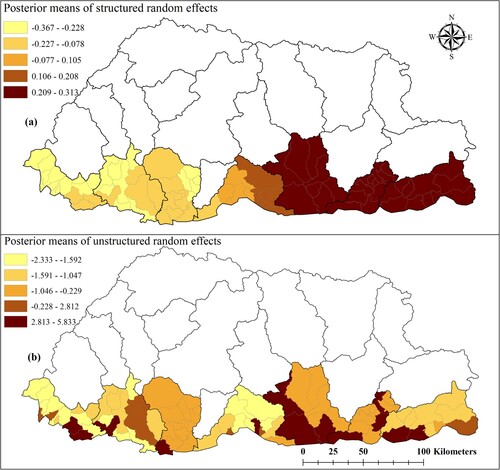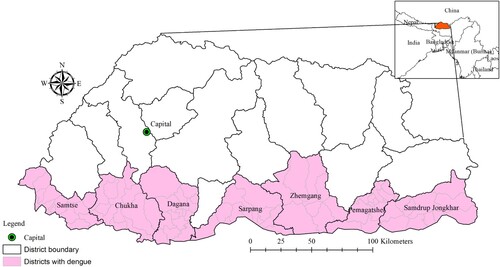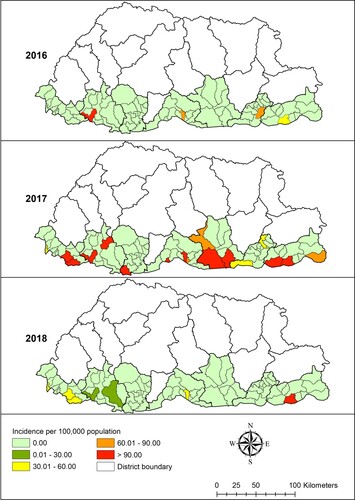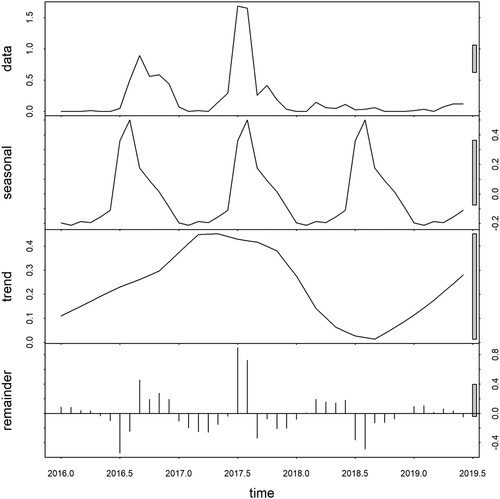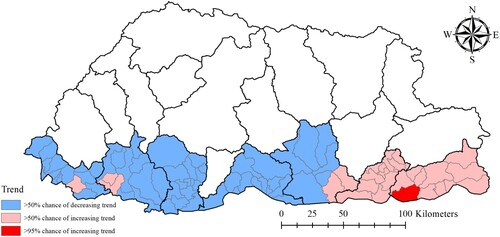Figures & data
Table 1. Distribution of monthly means of dengue fever cases and climate and environmental variables in Bhutan, January 2016–June 2019.
Figure 3. Raw standardized morbidity ratio of dengue by sub-districts in Bhutan, January 2016–June 2019
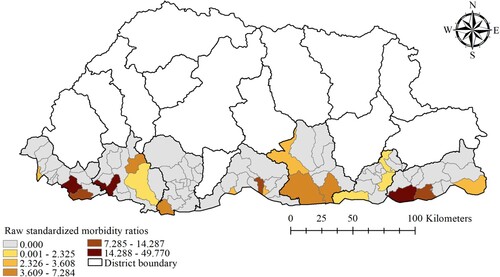
Figure 5. Spatial distribution of posterior means of structured (a) and unstructured random effects (b) in Bhutan, January 2016–June 2019 based on a Bayesian spatiotemporal model.
